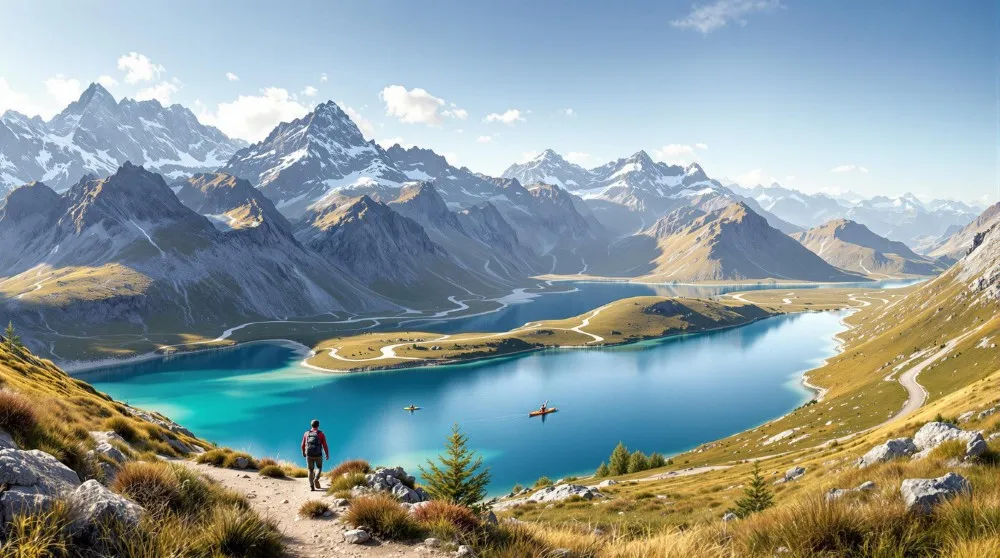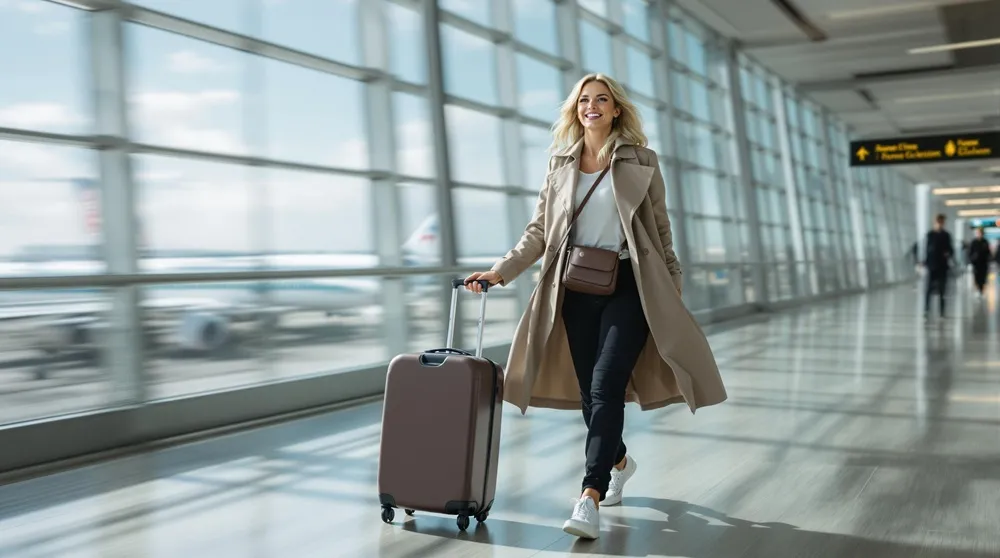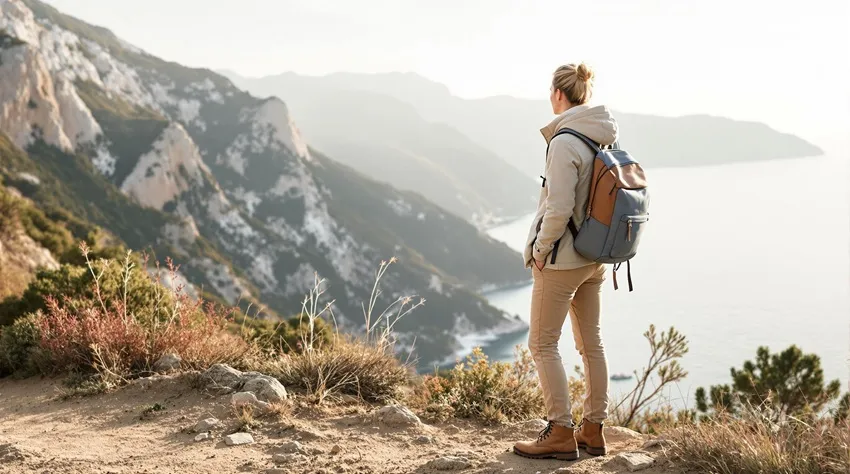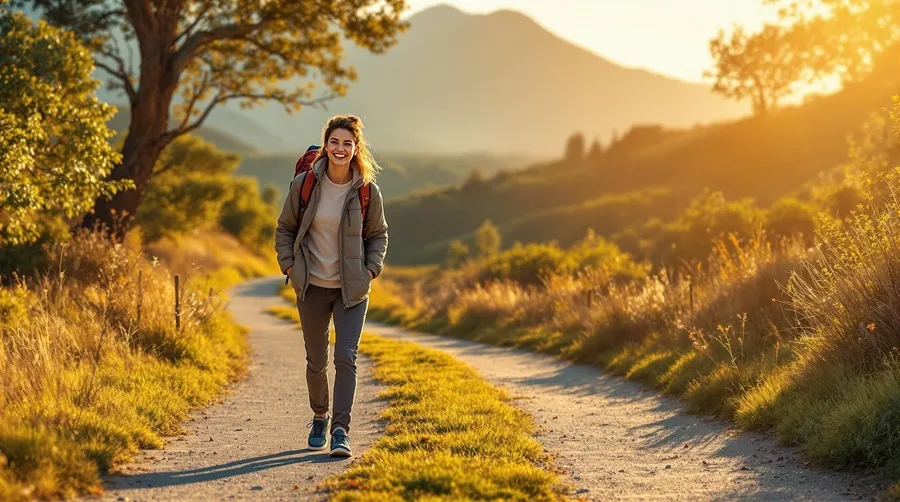Ready to hike breathtaking trails, cycle scenic routes, and dive into refreshing waters all on one trip? Awesome! Adventure travel mixing hiking, biking, and water sports offers the thrill of a lifetime. But let’s be real, figuring out what to pack for such different activities can feel like solving a puzzle, right? Don’t sweat it! Having the right clothing and gear is super important – it keeps you safe, comfy, and ready to enjoy every single moment. This guide is your ultimate adventure travel packing list, designed to make prepping easy. We’ll cover essential clothing layers, the best footwear, must-have gear for each sport, and simple packing tips. Let’s get you ready!
(For more general travel style ideas, check out our main guide: Travel Fashion: Your Complete Guide to Comfortable & Chic Outfits on the Go)
Understanding Your Adventure: Tailoring Your Packing
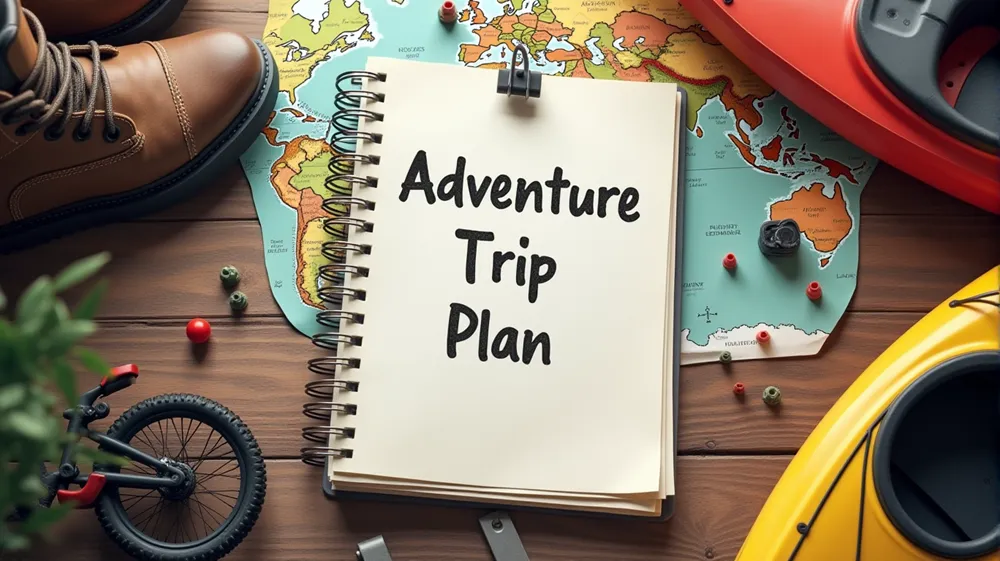
Before you start throwing things in a bag, let’s pause! Thinking about your specific trip helps you create the perfect adventure travel packing list and avoid carrying stuff you don’t need. Trust me, your back will thank you later!
Know Your Activities
What’s the main event? Will you spend most of your time hiking rugged trails, cycling scenic paths, or diving into water sports? Identifying your primary activity helps you prioritize. While a good quick-dry t-shirt might work for all three, if cycling is your focus, padded shorts become essential, whereas they’re useless for kayaking. Figure out where your time goes first.
Destination and Climate Considerations
Always, always check the weather forecast for your destination! Packing for a cool, rainy hike in the mountains is vastly different from gearing up for hot, humid beach biking. Consider temperature ranges, the chance of rain, and even humidity levels. Also, think about the terrain – are the trails rocky or flat? Is it lake kayaking or ocean surfing?
Trip Duration and Intensity
How long will you be exploring? A weekend adventure obviously requires less gear than a two-week multi-sport trip. Also, consider how intense your activities will be. A leisurely bike ride along the coast needs different clothing than a challenging, multi-day mountain trek. Generally, longer or more intense trips require more durable and versatile gear.
Essential Clothing for Adventure Travel: Layering is Key
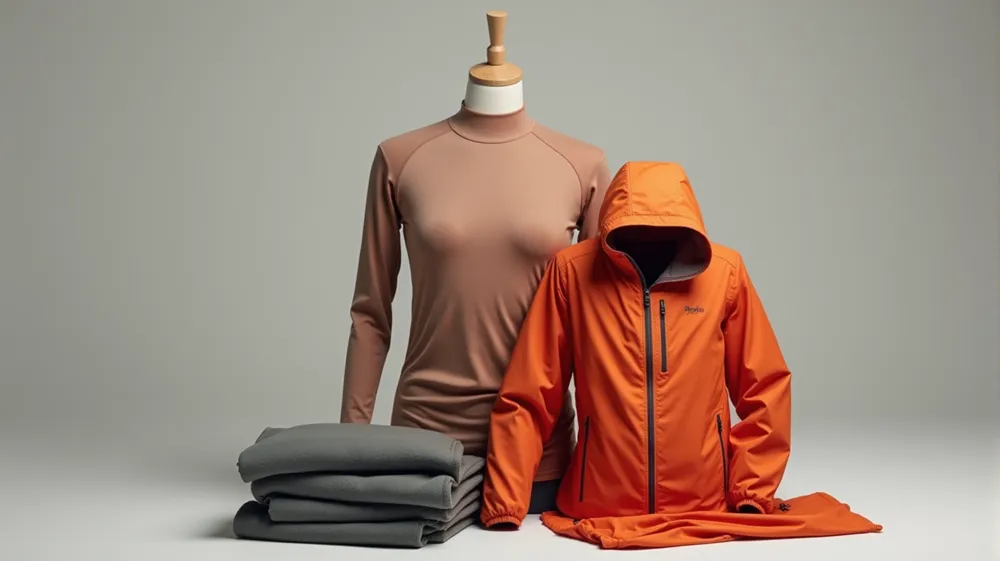
Alright, let’s talk clothes! When you’re putting together your adventure travel packing list, thinking in layers is the absolute best approach. Weather can change fast, whether you’re climbing a mountain or cycling along a coast. Layering lets you easily adjust to stay comfy, no matter what Mother Nature throws your way. Think of it like building your own personal thermostat!
The Base Layer: Moisture-Wicking Foundation
First up is your base layer – the stuff right next to your skin. Its main job? To pull sweat away from you so you don’t feel damp and chilly (or sticky and hot!). Forget cotton, it just gets wet and stays wet. Instead, go for materials like merino wool (amazing because it doesn’t get smelly easily!) or synthetic fabrics (like polyester or nylon blends). Pack a couple of moisture-wicking t-shirts or long-sleeved tops, and maybe some leggings or long underwear depending on how cold it might get.
The Mid Layer: Insulation for Warmth
Next comes your insulating mid-layer. This is what actually keeps you warm! Think of it as trapping your body heat. Fleece jackets are super versatile and a popular choice. For colder trips, a puffy jacket filled with down or synthetic insulation is fantastic – they’re often lightweight and pack down small. Even a simple wool sweater can work in milder conditions. Choose based on the temperatures you expect; you might need a light fleece for cool evenings or a serious puffy for snowy peaks.
The Outer Layer: Protection from the Elements
Finally, your outer layer, or shell, is your shield against wind and rain. You definitely want something that’s both waterproof and breathable. Why breathable? Because you don’t want to trap sweat inside – that defeats the purpose! Look for a good rain jacket and maybe rain pants. Key features to check for include taped seams (stops water sneaking through the stitching) and an adjustable hood that fits well.
Activity-Specific Clothing Considerations:
Beyond the basic layers, pack items specific to your planned fun:
- Hiking: Grab durable hiking pants (some convert into shorts – super handy!) and good moisture-wicking hiking socks. Blisters are no fun!
- Biking: Padded bike shorts will save your behind, trust me. Add moisture-wicking bike jerseys and maybe some cycling gloves for grip and comfort.
- Water Sports: Pack your swimsuits, of course! A rash guard is great for sun protection and preventing chafing. Quick-drying board shorts or leggings are also perfect for getting wet.
Footwear for Every Adventure
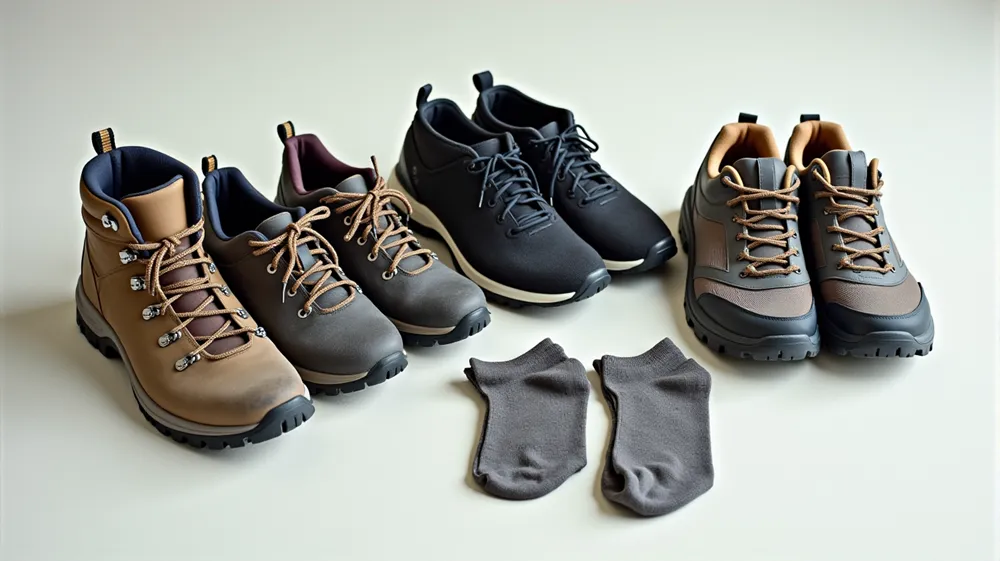
Don’t overlook your feet when creating your adventure travel packing list! Choosing the right shoes for each activity is super important for staying comfortable and safe out there. Happy feet make for a much happier adventurer, believe me!
Hiking Footwear
What you hike in really depends on the trail.
- Hiking boots offer the most ankle support and are best for rough, rocky terrain or carrying a heavy pack.
- Trail running shoes are lighter and more flexible, great for well-maintained trails and faster hiking.
- Hiking sandals (the sturdy kind!) work for easy trails, warm weather, and situations where your feet might get wet.
- Whatever you choose, please break them in before your trip! Wear them around the house or on short walks. Your feet will thank you later.
Biking Footwear
If you’re serious about cycling, specific cycling shoes that clip into pedals (clip-in) or have sticky soles for flat pedals can boost your power and control. But honestly? For many adventure travelers, a comfortable pair of athletic shoes or sturdy sneakers works just fine, especially for casual biking. Make sure they have a sole that’s stiff enough so you don’t feel the pedal too much.
Water Sports Footwear
Protect those toes! Water shoes or sturdy sandals with good grip (think styles with straps, not flip-flops) are essential for kayaking, rafting, or just walking on rocky beaches. They protect you from sharp objects and help you keep your footing on slippery surfaces. If you’ll be in colder water, neoprene booties can keep your feet warmer.
Essential Socks
Never underestimate the power of good socks! Always choose moisture-wicking socks made from merino wool or synthetic materials. Avoid cotton – it holds moisture and leads to blisters. Pack extra pairs! Swapping into dry socks halfway through a long hike or after getting wet feels amazing and helps prevent foot problems.
Essential Gear for Hiking

Hitting the trails? Awesome! Beyond your layered clothing and sturdy footwear, there’s some specific gear you’ll want to add to your adventure travel packing list for a safe and enjoyable hike.
Backpack
You need something to carry your stuff!
- For day hikes, a backpack around 20-35 liters is usually plenty.
- For multi-day treks where you’re carrying camping gear and more food, you’ll need a larger pack, often 50 liters or more.
- Look for comfy padded shoulder straps and a hip belt – this puts the weight on your hips, not your shoulders, which makes a huge difference! A built-in rain cover is also a great feature.
Navigation
Knowing where you’re going is pretty important!
- Always carry a physical map of the area and a compass. Learn how to use them before you go!
- GPS devices, GPS watches, or smartphone apps with offline map capabilities are fantastic tools, but don’t rely on them solely – batteries can die, and signals can drop. Think of them as helpful backups.
Safety and Comfort
These small items make a big impact:
- First-aid kit: Include basics like bandages, antiseptic wipes, pain relievers, blister treatment (like Moleskin), and any personal medications you need.
- Headlamp or flashlight: Crucial if you get caught out after dark. Pack extra batteries!
- Sun protection: Pack sunscreen, sunglasses, and a wide-brimmed hat or baseball cap. Sunburns happen even on cloudy days!
- Water: Carry enough water for your hike. A reusable water bottle or a hydration reservoir (like a CamelBak) works great.
- Trekking poles (optional): These help with stability, especially on steep uphills or downhills, and take stress off your knees.
- Multi-tool or knife: Handy for lots of small tasks. Remember to pack this in your checked luggage if you’re flying!
Essential Gear for Biking
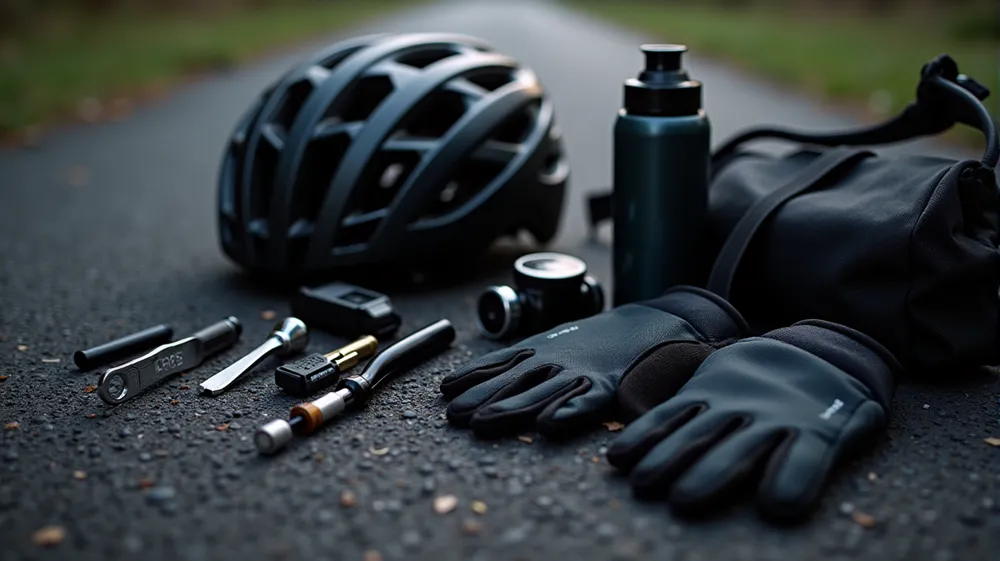
Ready to hit the road or trail on two wheels? Awesome! While you might be renting a bike at your destination, there are still some key items you’ll want to consider adding to your adventure travel packing list. If you are planning a trip specifically around bringing your own bike, your packing will obviously be more involved!
The Bike
Most adventure travelers rent bikes locally. However, if your trip revolves around biking and you’re bringing your own, make sure you have the right travel case and know the airline’s policies! For most, though, the focus will be on the gear below.
Safety Gear
Don’t skimp on safety – it’s number one!
- Helmet: This is non-negotiable. Always wear a properly fitting helmet, whether you’re riding for five minutes or five hours. Protect your noggin!
- Cycling gloves: These aren’t just for looks! They improve grip, cushion your hands, and protect them if you happen to fall.
- Reflective gear: Especially if you might ride near dawn, dusk, or at night, wear bright clothing or add reflective tape/lights to yourself and the bike so cars can see you easily.
Repair and Maintenance
Getting a flat tire miles from anywhere is a bummer. Be prepared!
- Basic bike repair kit: Pack tire levers (makes getting the tire off easier), a small pump or CO2 inflator with cartridges, and a bike-specific multi-tool.
- Spare inner tube: Make sure it’s the right size for your bike’s tires. Learning how to fix a flat before your trip is a great idea!
Comfort and Convenience
These items make the ride smoother:
- Water bottle and cage: Stay hydrated! Make sure your rental bike has a bottle cage, or plan to carry water in a small backpack. Hydration packs work well too.
- Small bag: A little saddlebag that fits under the seat or a small backpack is perfect for carrying your repair kit, phone, snacks, and sunscreen.
- Bike lock: Essential if you plan to leave your bike unattended, even for a few minutes.
Essential Gear for Water Sports

Ready to make a splash on your adventure? Whether you’re kayaking down a river, snorkeling in crystal-clear waters, or catching some waves, having the right gear makes all the difference. Let’s dive into the water sports essentials for your adventure travel packing list!
Personal Flotation Device (PFD) / Life Vest
Okay, let’s talk safety first. A PFD, or life vest, is non-negotiable for most water activities like kayaking or paddleboarding. Seriously, don’t skip this! Make sure it fits snugly but comfortably – you should be able to breathe easily, but it shouldn’t ride up over your chin when you raise your arms. Always check the PFD’s rating and condition before you head out. Your safety is paramount!
Water Protection
Water and electronics don’t mix! Protect your valuables:
- Waterproof Dry Bags: Grab a couple in different sizes. They are lifesavers for keeping clothes, snacks, and gadgets (like your camera!) completely dry. I once learned this the hard way with a soggy sandwich – not fun!
- Waterproof Phone Case: You’ll want to capture those awesome moments. A good waterproof case, often with a lanyard, keeps your phone safe and accessible.
Activity-Specific Gear
Depending on your chosen fun, you might need:
- Swimming/Snorkeling: Your favorite swimsuit, a mask, snorkel, and maybe fins if you prefer your own.
- Kayaking/Canoeing: Rentals usually include paddles, but if you’re bringing your own, don’t forget it! A spray skirt might be needed for rougher water or sea kayaking.
- Surfing/Paddleboarding: A leash is crucial – it keeps your board connected to you if (or when!) you wipe out.
Comfort and Utility
Little things make a big difference:
- Quick-Dry Towel: Lighter and faster-drying than regular towels. Perfect for drying off quickly between dips.
- Sunglasses with a Strap: Protect your eyes from glare off the water. A strap keeps them from sinking if they fall off!
- Waterproof Hat: A wide-brimmed hat keeps the sun off your face and neck. Choose one that can handle getting wet.
Budget-Friendly Gear Acquisition
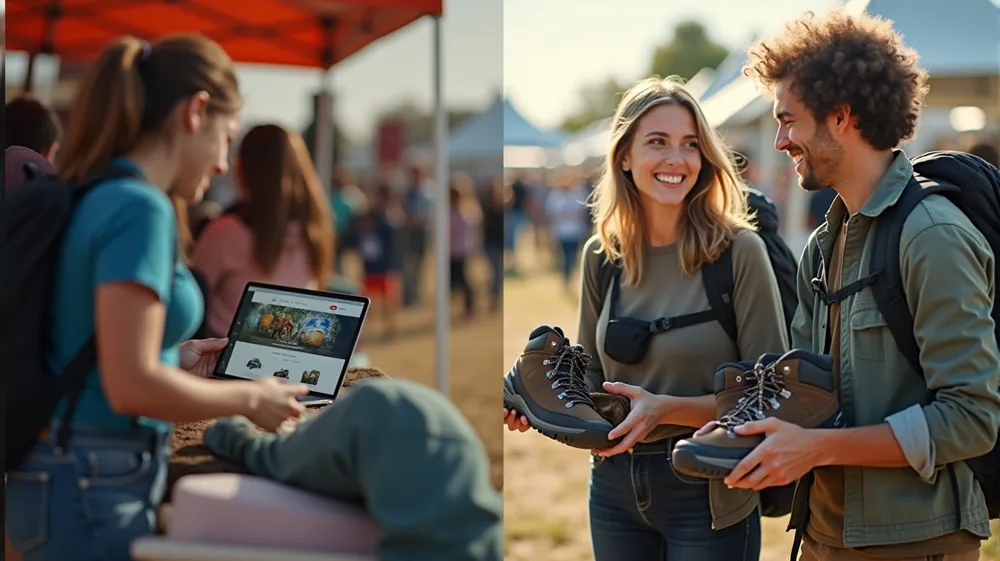
Worried about the cost of gear for your next adventure? Don’t sweat it! You don’t always need brand-new, top-of-the-line equipment to have an amazing time. Here are some savvy ways to build your adventure travel packing list without breaking the bank:
- Borrow or Rent: Ask friends or family if they have gear you can borrow. Local outdoor shops or outfitters near your destination often rent items like bikes, kayaks, or even hiking poles.
- Shop Secondhand: Check out thrift stores, consignment shops, or online marketplaces for quality used gear. You can find some incredible bargains!
- Hunt for Sales: Keep an eye out for end-of-season sales or holiday discounts at major retailers.
- Prioritize Wisely: Spend more on crucial safety items (like a good helmet or PFD) and look for budget-friendly alternatives for things like basic clothing layers or towels.
Smart Packing Strategies for Adventure Travel

Packing efficiently means less hassle on the road! A well-packed bag makes finding things easier and carrying your load more comfortable. Try these simple tricks:
- Roll, Don’t Fold: Rolling clothes saves a surprising amount of space and helps reduce wrinkles.
- Use Packing Cubes: These organizers are fantastic! They compress clothes and keep different items (like tops, bottoms, gear) neatly separated.
- Fill Empty Spaces: Stuff socks, underwear, or small items inside your shoes to maximize every inch.
- Pack Heavy Items Right: Place heavier gear like shoes or toiletries close to your back and centered in your backpack for better balance.
- Keep Essentials Handy: Put things you’ll need often (passport, phone, snacks, rain jacket) in an easily accessible pocket.
Conclusion
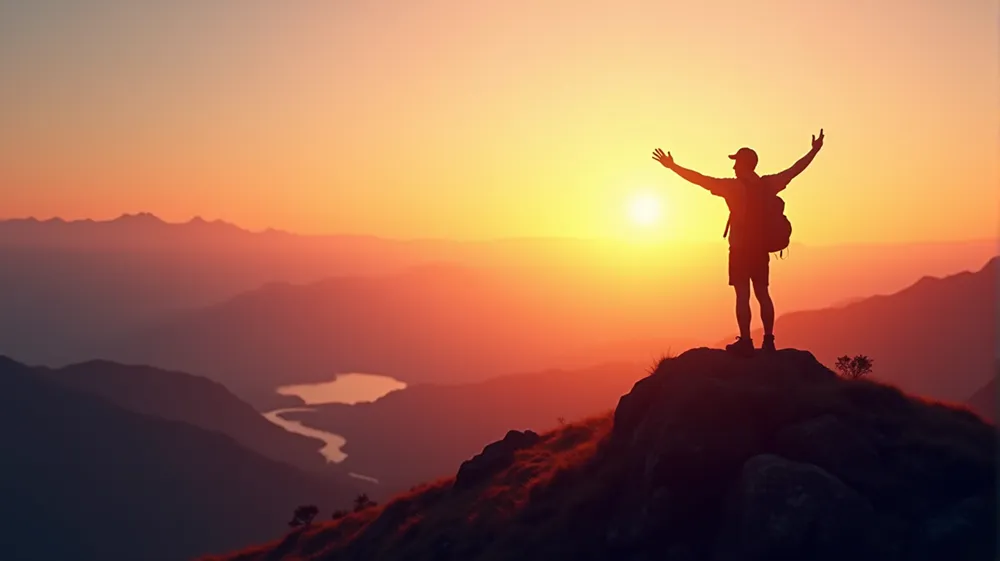
Packing the right clothing and gear is your first step toward a fantastic and safe adventure! Whether you’re hitting the trails, cycling scenic routes, or diving into water sports, having the essentials makes all the difference. Remember the key principles: layer your clothing for changing conditions, choose gear specific to your activities, and pack smart to save space and hassle. Now that you’ve got your adventure travel packing list sorted, get out there and embrace the journey. The world is waiting!
(Optional: Got any amazing packing hacks we missed? Share your tips in the comments below!)
For more tips on looking great while staying comfortable on any trip, check out our – Your Complete Guide to Comfortable & Chic Outfits on the Go.
